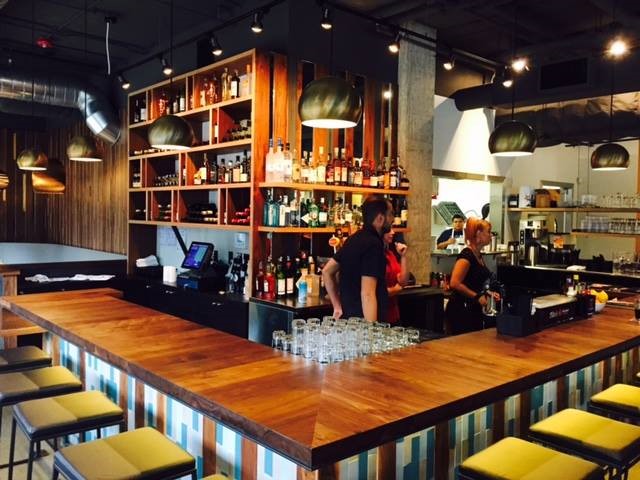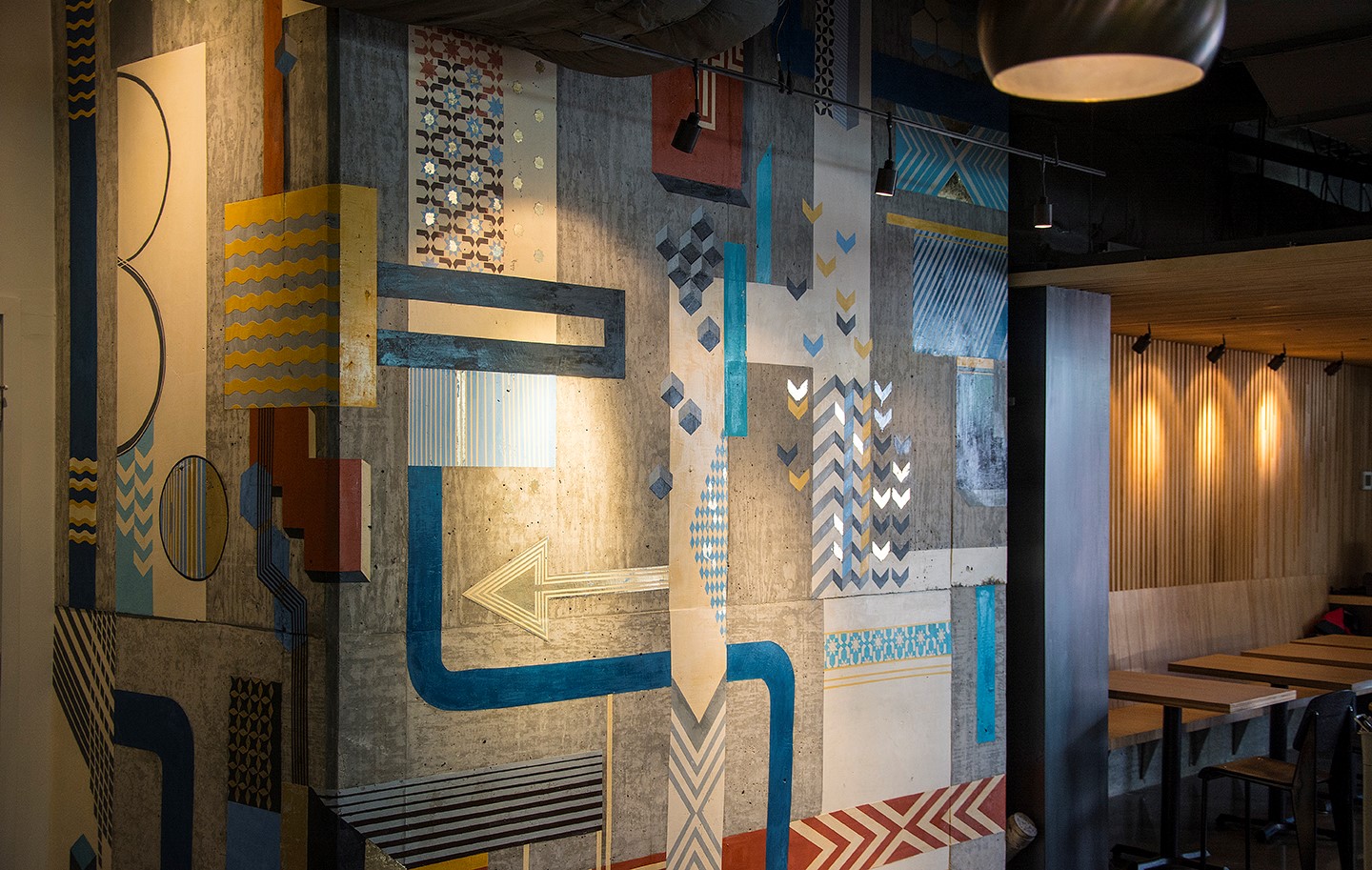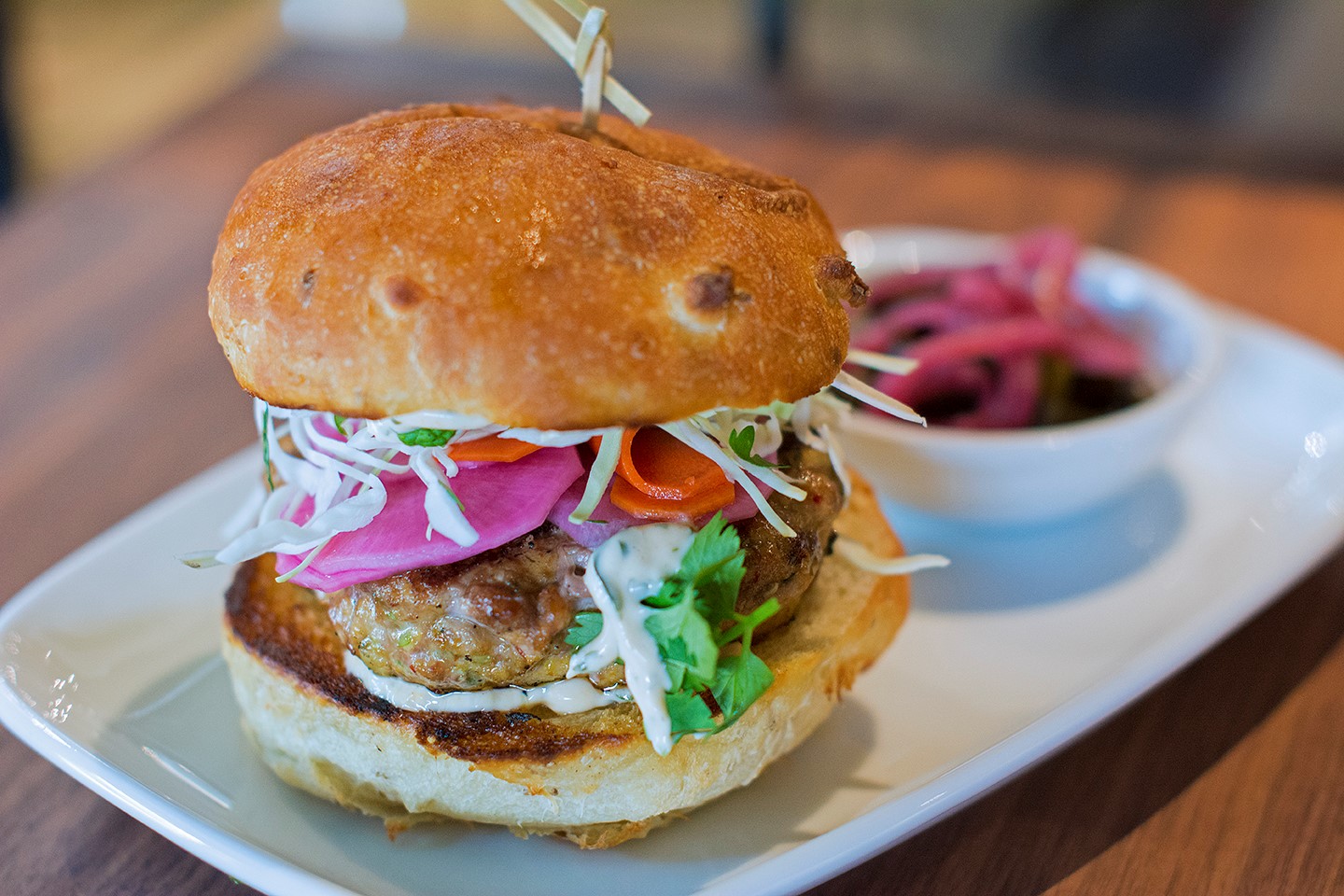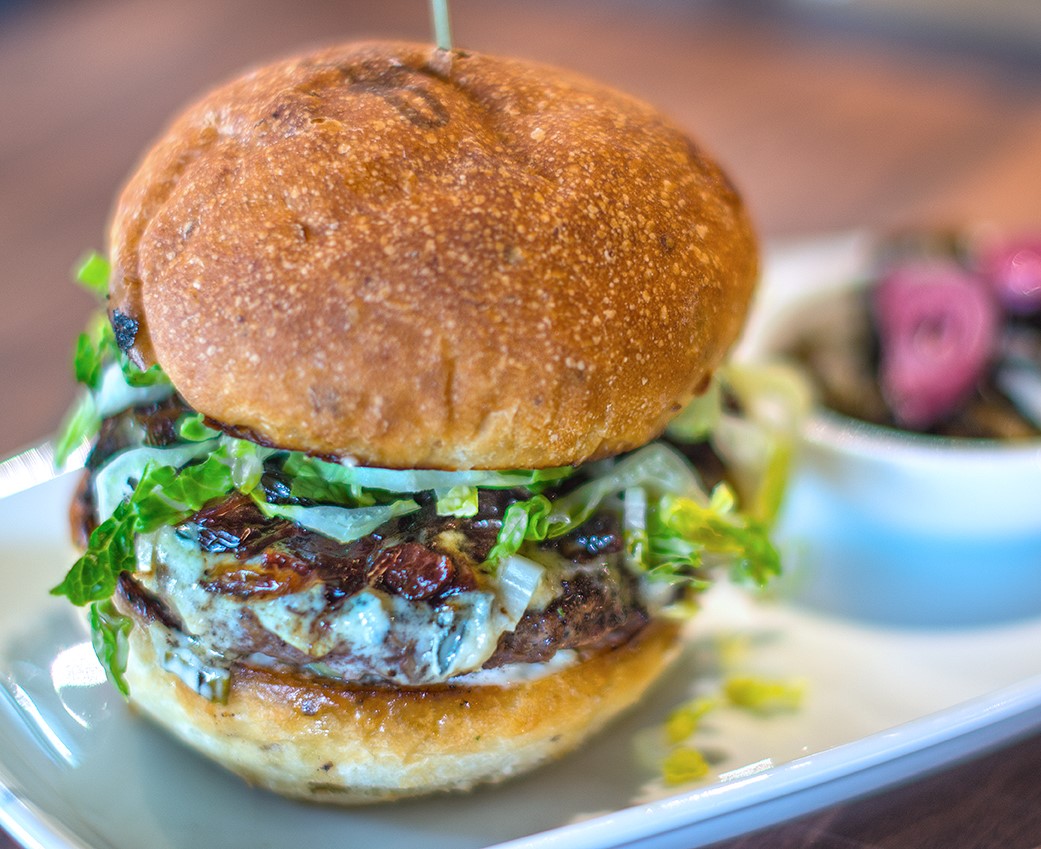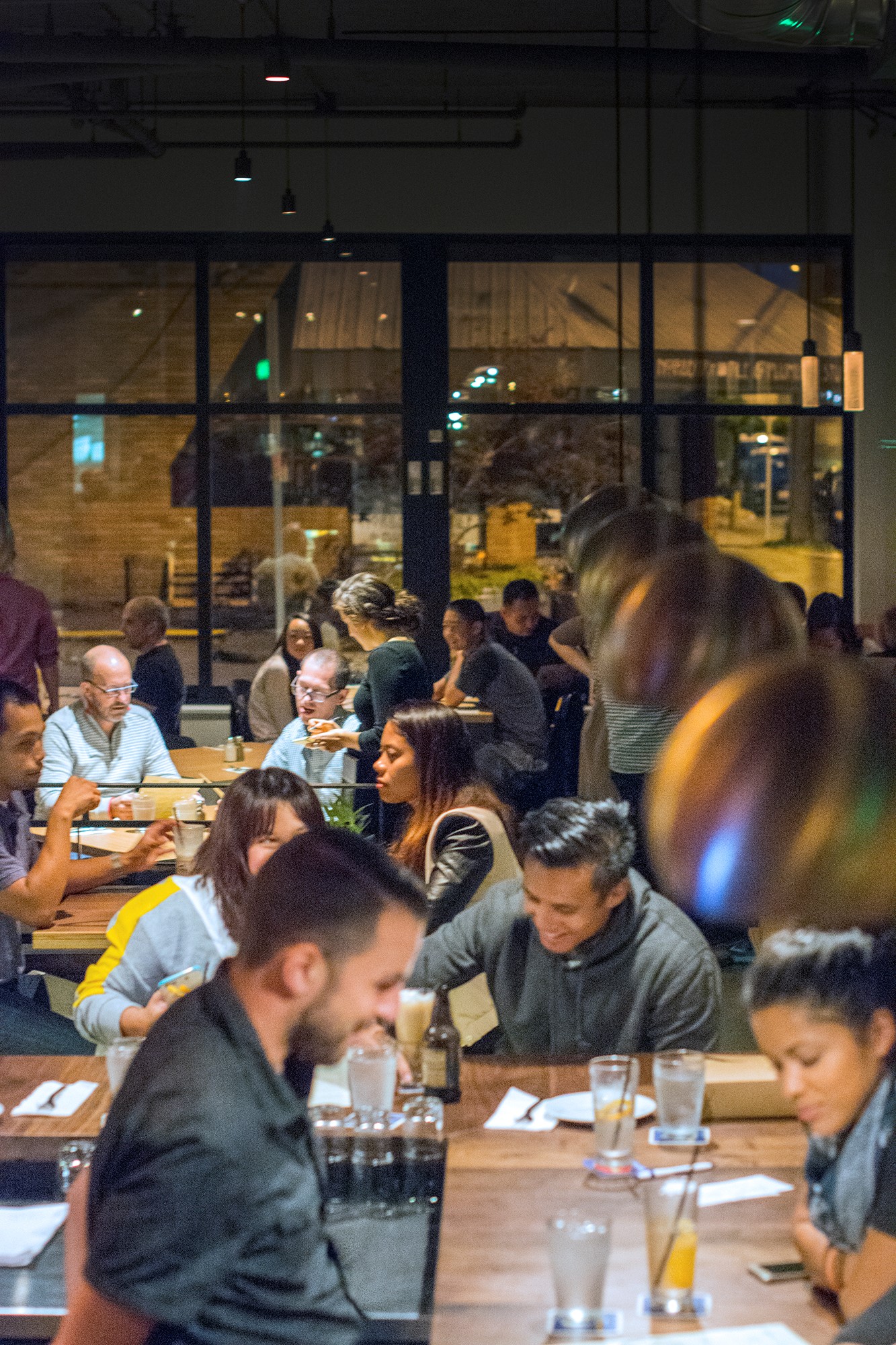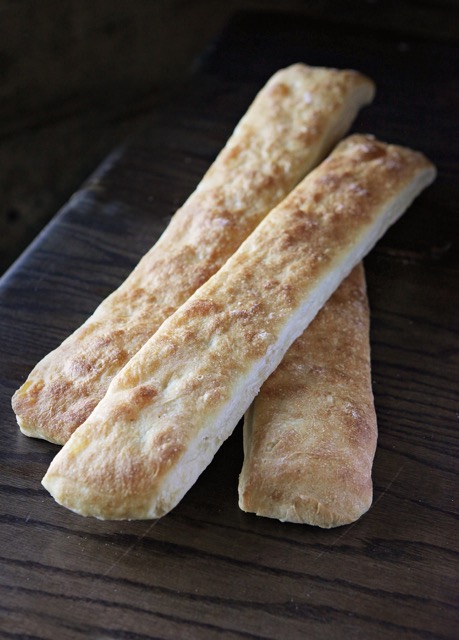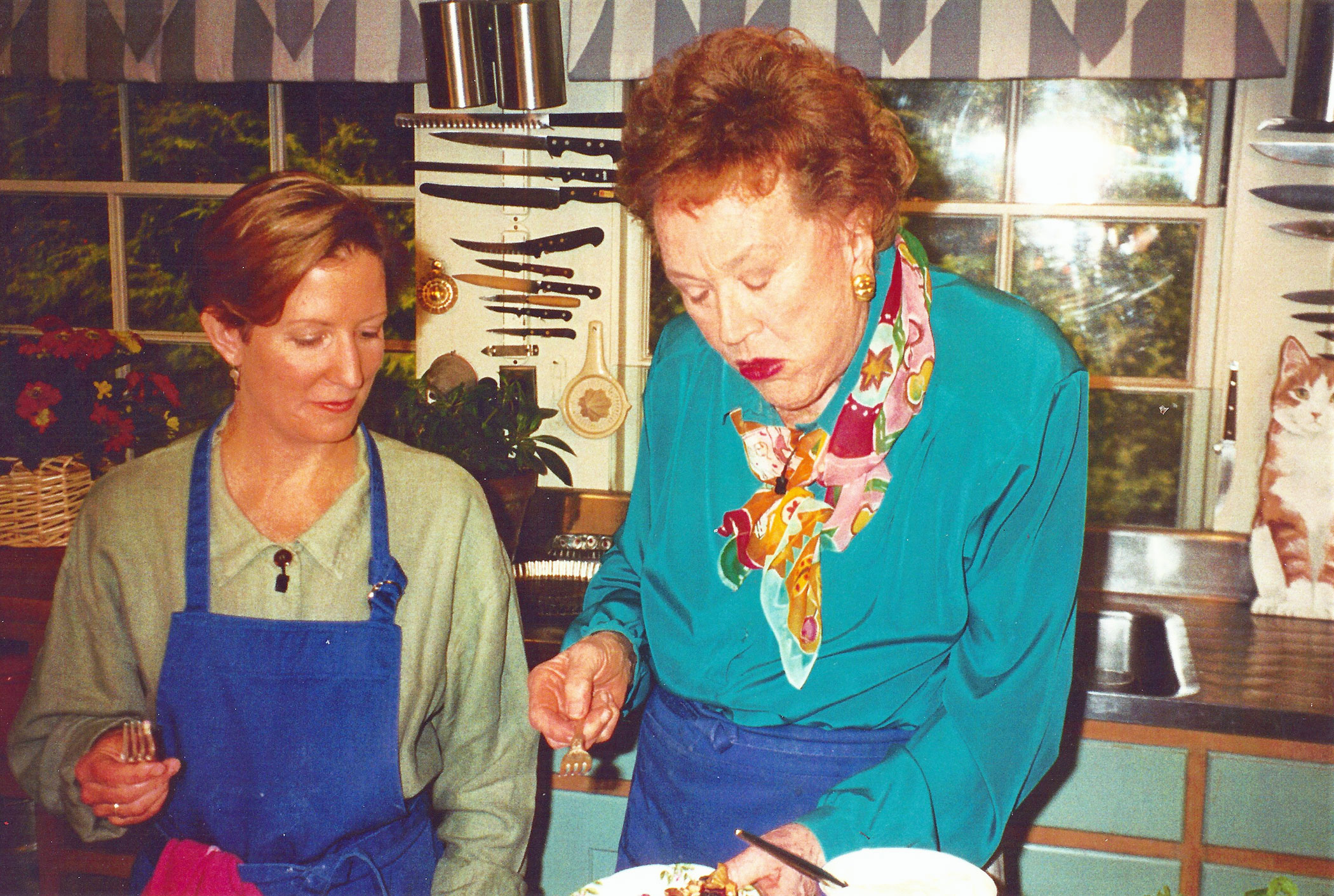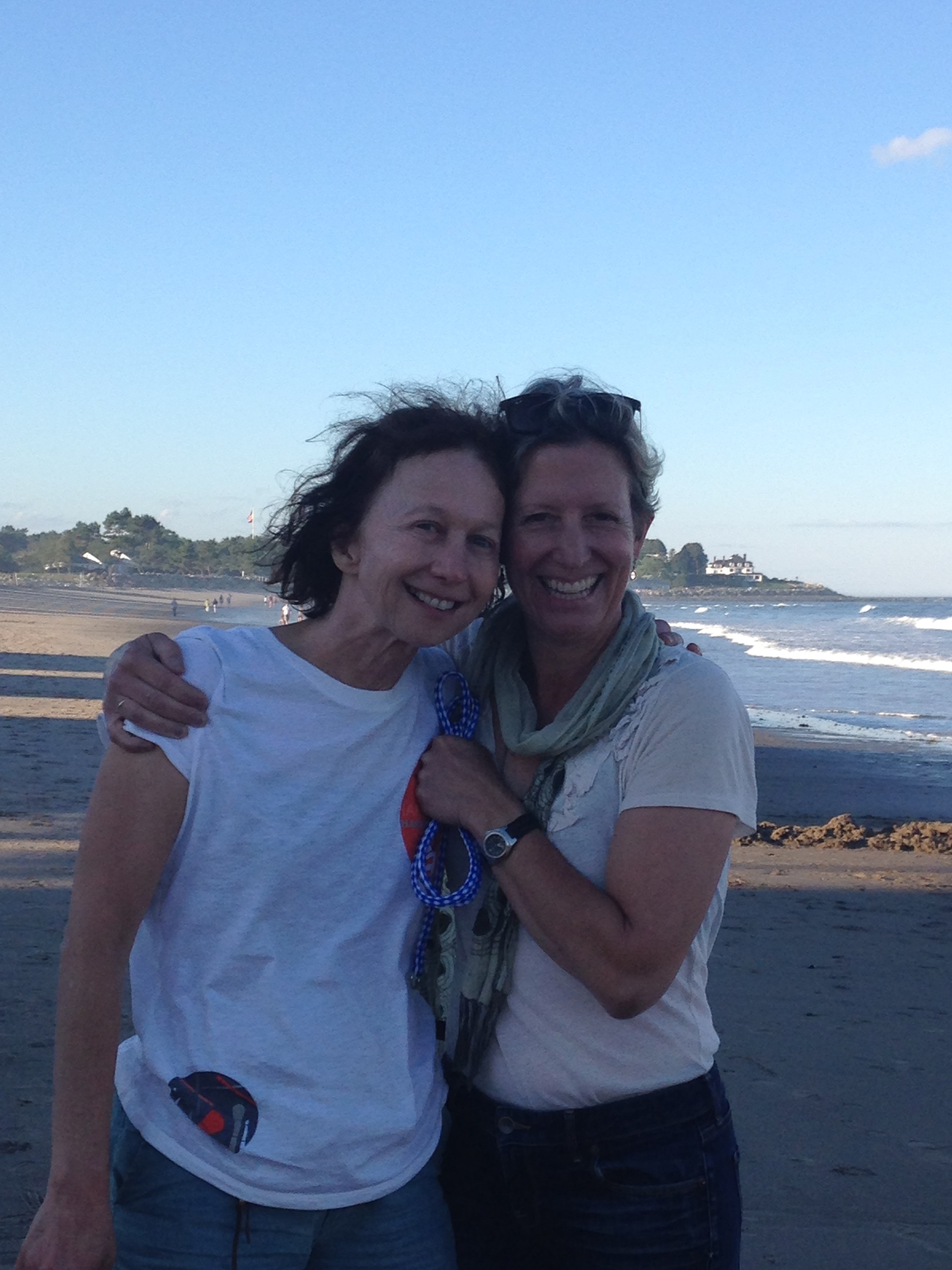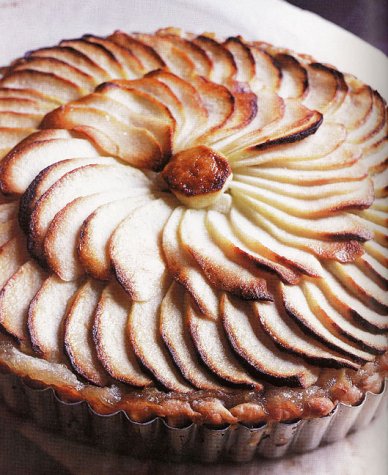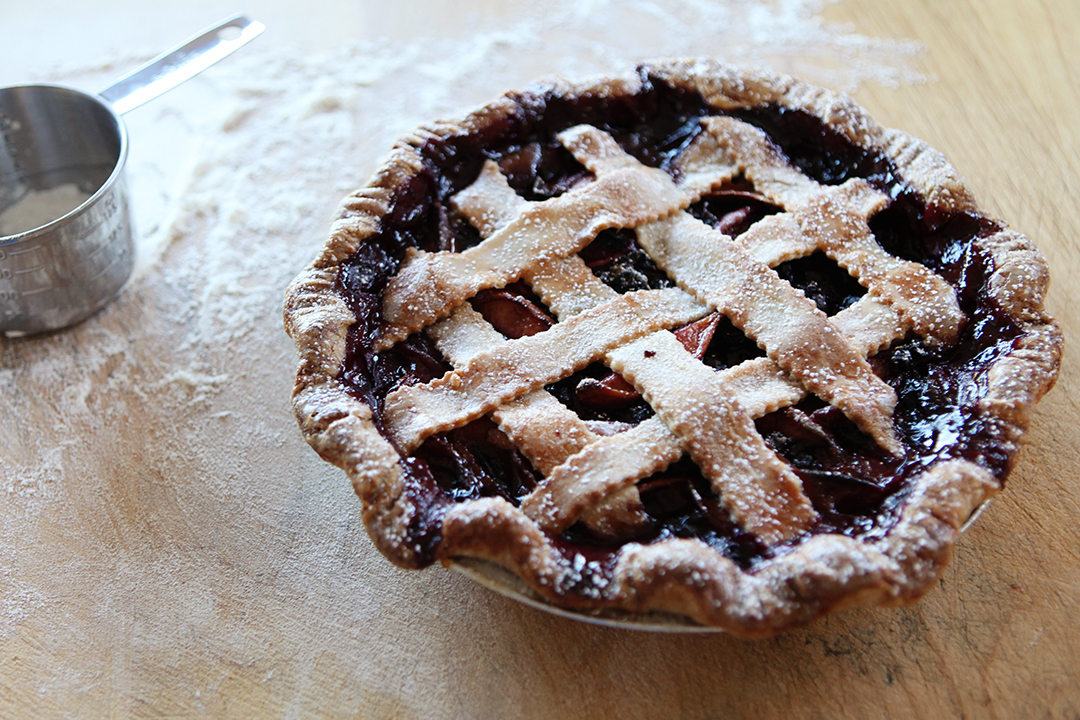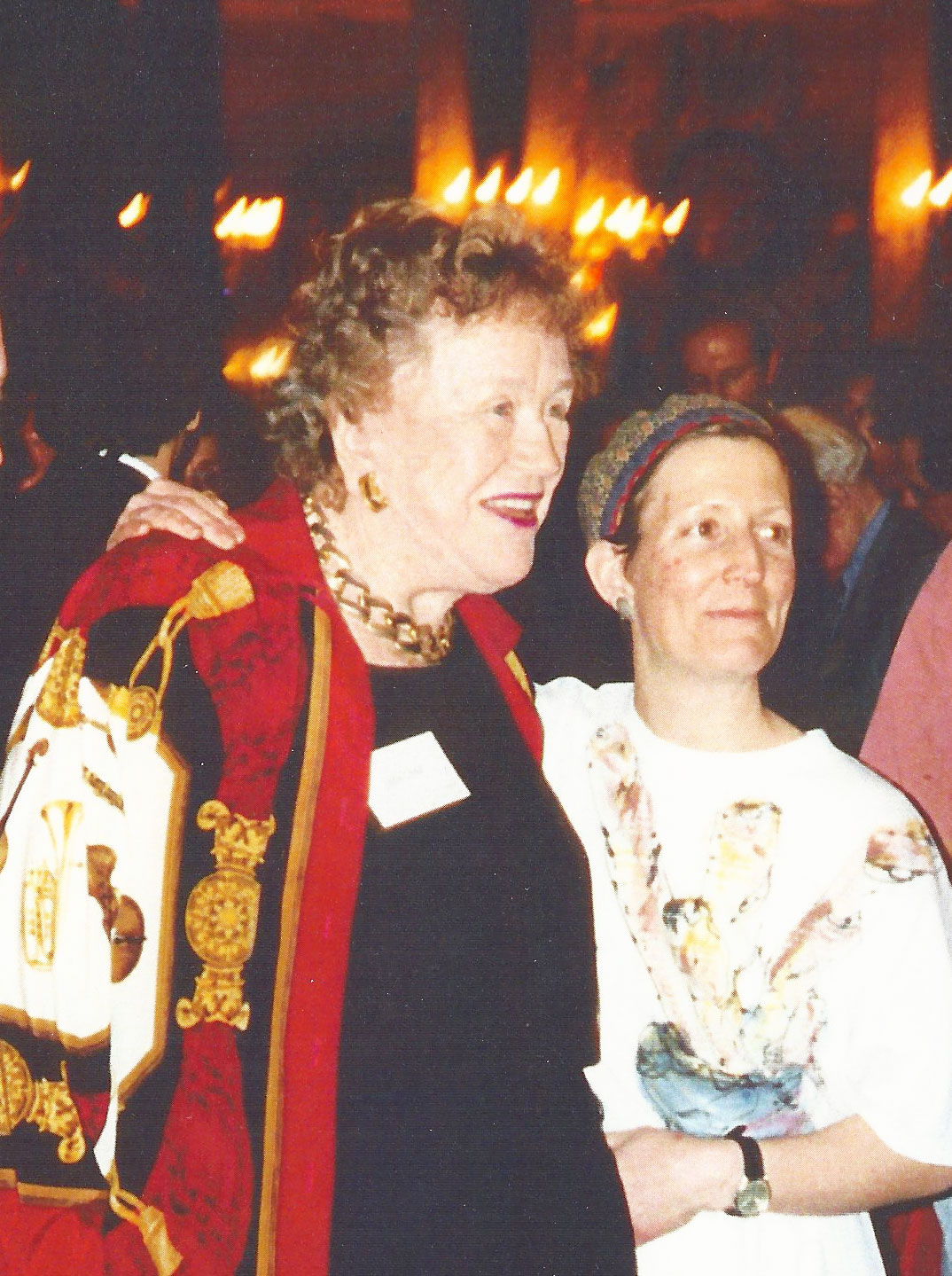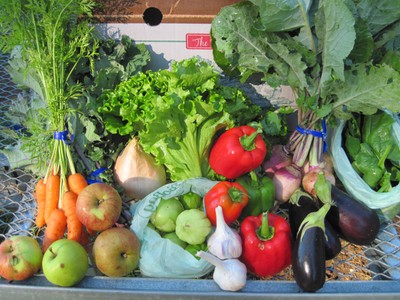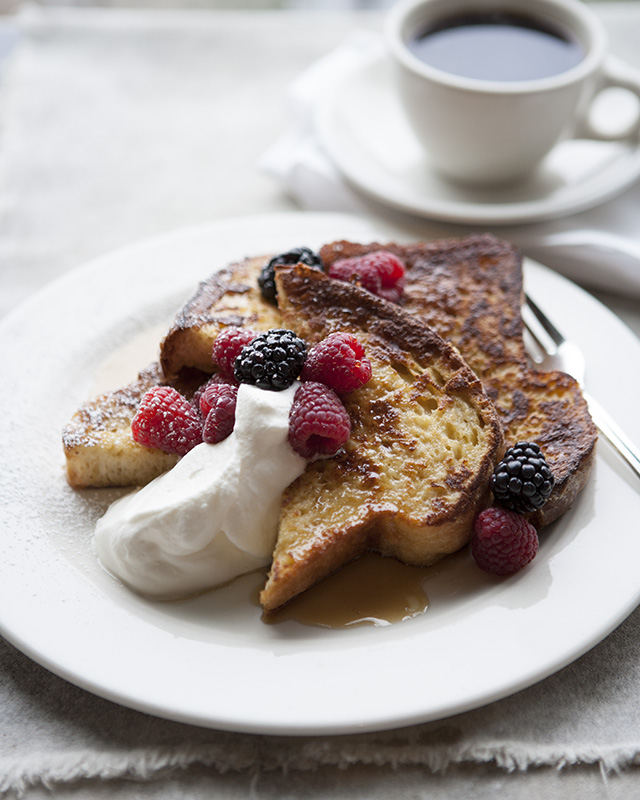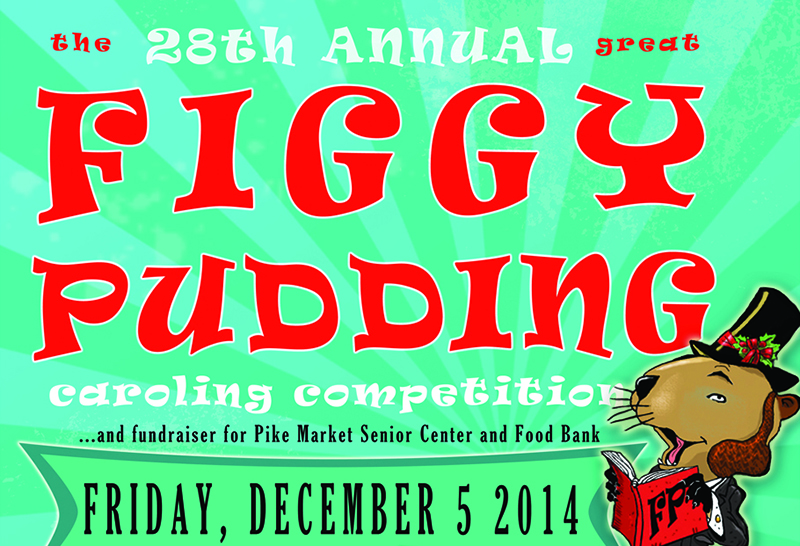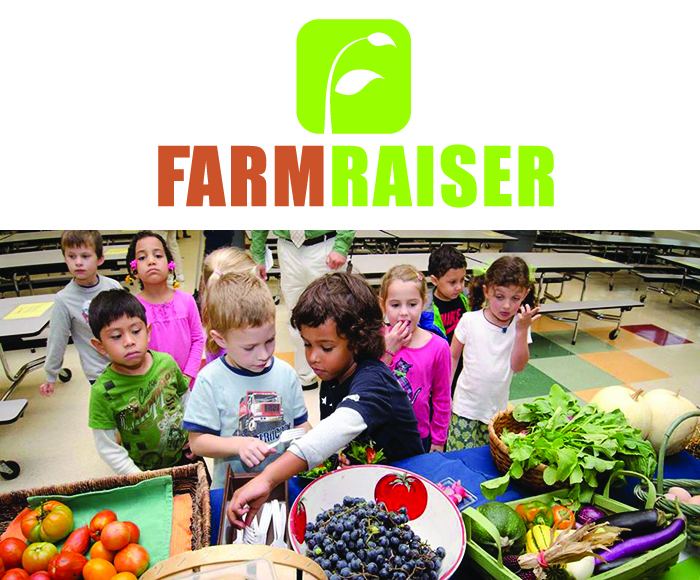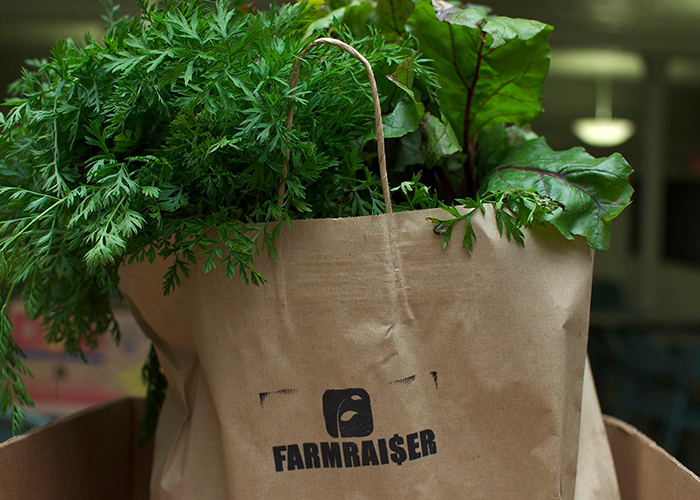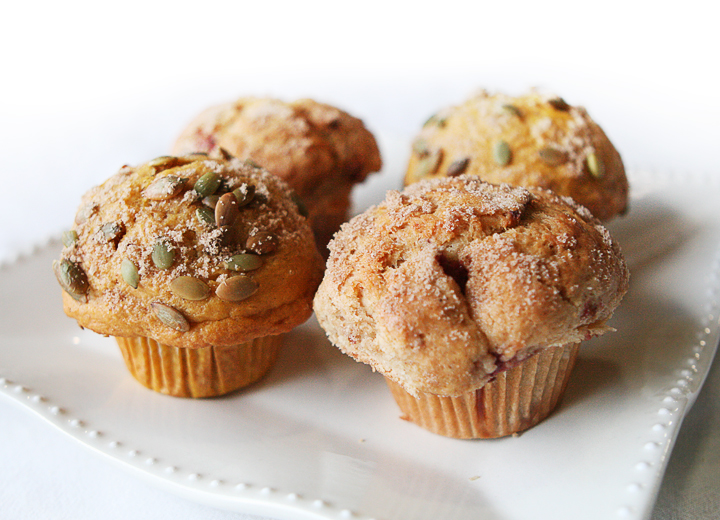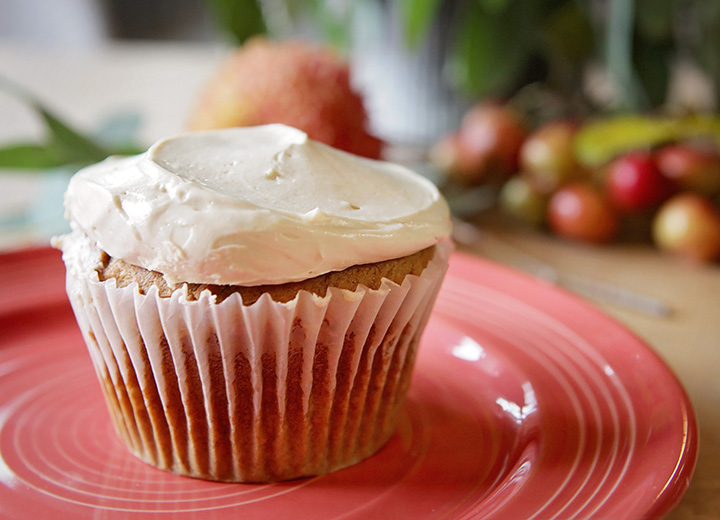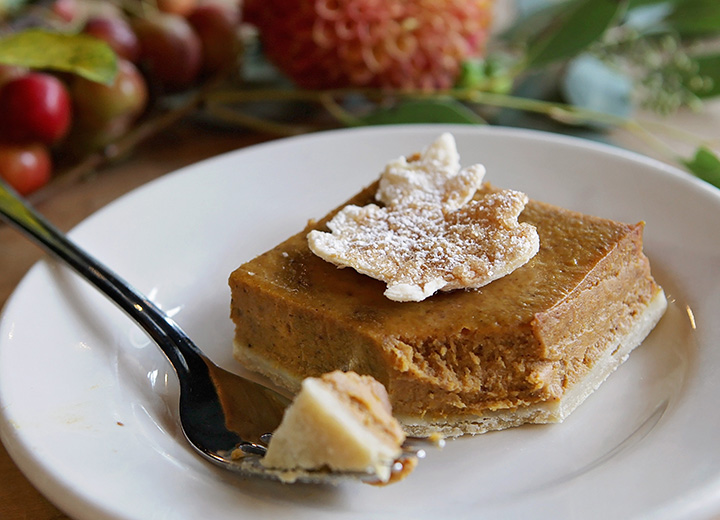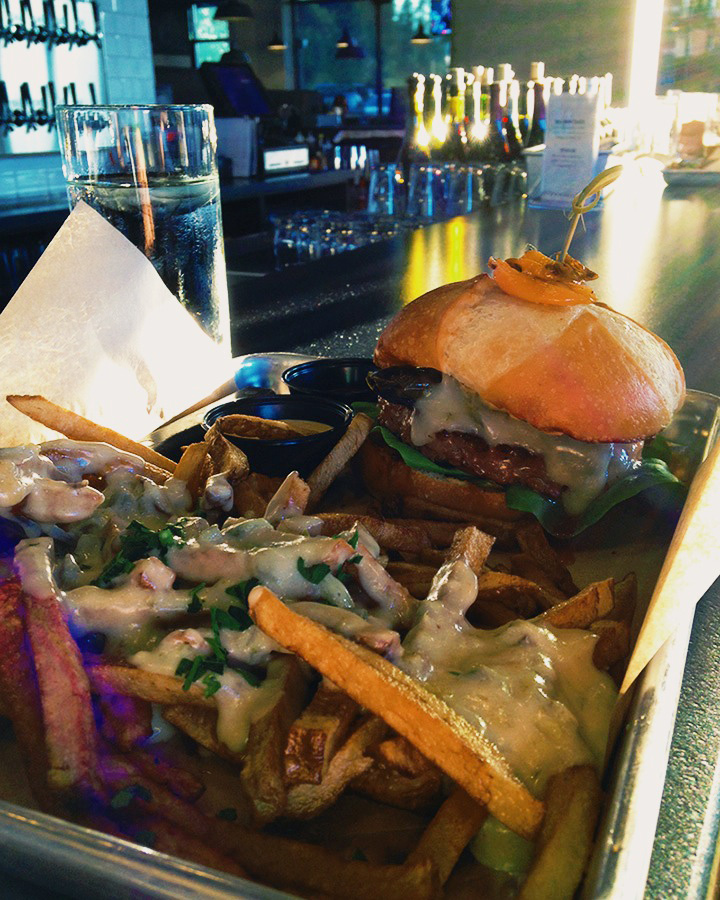I had the pleasure of dining with Phuong Bui, Macrina’s head baker, and his wife at the SkyCity restaurant to celebrate his 10 year anniversary. It was a big treat and fun for him to see the bread he bakes on the tables of one of the most iconic locations in the country. Nothing beats the remarkable view or the delicious food of this longstanding Seattle restaurant.
Leslie

The Space Needle
Imagine this: It’s 1961. Seattle is soon to host the World’s Fair. You walk into a bank and announce that you plan to build the tallest building west of the Mississippi and slap a revolving restaurant on top. Oh, and so it’s ready in time for the fair, you need to build it in about 400 days. Might as well ask for a time-traveling DeLorean while you’re dreaming.
But somehow they pulled it off, sans the DeLorean. A group calling itself the Pentagram Corporation, which included a few of Seattle’s most recognizable businessmen, didn’t need a bank loan. They were the bankers and developers of the day. The risk was sizable. 550 feet of risk. 467 dump trucks of cement poured to a depth of 30 feet of risk. $4.5 million dollars of risk. They sought nothing less than to present a vision of the future to the rest of the world.
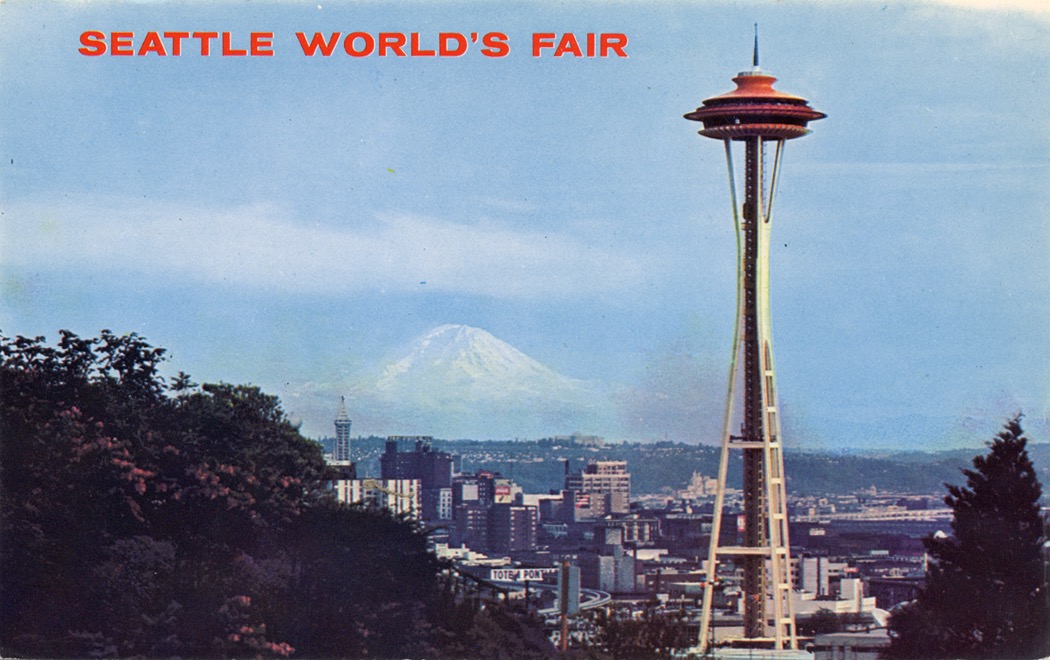 Billed as The Century 21 Exposition, the World’s Fair of 1962 in Seattle also featured the monorail. Just before the fair opened The New York Times wrote, “The high-speed, quiet monorail cars catapult northward from the heart of Seattle for a few breath catching moments, then glide to a stop. There suddenly, all around you, are glimpses of the world of tomorrow.” The monorail was the time-traveling Delorean carrying hordes of visitors to the world of tomorrow.
Billed as The Century 21 Exposition, the World’s Fair of 1962 in Seattle also featured the monorail. Just before the fair opened The New York Times wrote, “The high-speed, quiet monorail cars catapult northward from the heart of Seattle for a few breath catching moments, then glide to a stop. There suddenly, all around you, are glimpses of the world of tomorrow.” The monorail was the time-traveling Delorean carrying hordes of visitors to the world of tomorrow.
Back then, world’s fairs were major spectacles, attended by people from around the globe. Seattle was a company town, a yawn of a city that functioned as a Boeing bunkhouse, and a long ways from growing up and joining the ranks of major American cities. Much of the world then thought Seattle rhymed with fetal.
As the structure went up, doubters arose. The Committee Hoping for Extra-Terrestrial Encounters to Save the Earth—CHEESE (an appropriate acronym) claimed to have plans from the 1962 World’s Fair that show the Space Needle was constructed to send transmissions to advanced beings in other solar systems. True story.
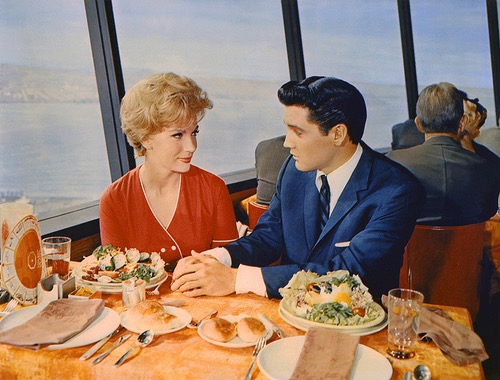 Another fun fact: Elvis filmed a movie at the Space Needle during the World’s Fair named, aptly enough, “It Happened at the World’s Fair.” In the Seattle Post-Intelligencer, reporter John Voorhees described the insanity surrounding The King: “The biggest attraction at the World’s Fair continues to be Elvis Presley, who may turn out to be the biggest boon to the sellers of camera film since the Space Needle was unveiled.”
Another fun fact: Elvis filmed a movie at the Space Needle during the World’s Fair named, aptly enough, “It Happened at the World’s Fair.” In the Seattle Post-Intelligencer, reporter John Voorhees described the insanity surrounding The King: “The biggest attraction at the World’s Fair continues to be Elvis Presley, who may turn out to be the biggest boon to the sellers of camera film since the Space Needle was unveiled.”
Fast forward a little more than 50 years and Seattle has been transformed from the scenic hillside town without an interstate to one of the fastest growing major cities in America. In the shadow of the Space Needle, South Lake Union has been transformed by Amazon’s growth. Boeing is still a major employer, but the local economy has diversified, much of its new growth driven by the technology sector.
 Through all this growth the Space Needle has provided a spectacular revolving view of the city’s evolution; neighborhoods torn down to build Interstate 5, construction cranes raising Belltown to new heights, new high-rise towers, more cranes, more towers, and suburbs oozing further north, east, and south.
Through all this growth the Space Needle has provided a spectacular revolving view of the city’s evolution; neighborhoods torn down to build Interstate 5, construction cranes raising Belltown to new heights, new high-rise towers, more cranes, more towers, and suburbs oozing further north, east, and south.
While some today consider the Space Needle an anachronistic vision of the future, more Jetsons than anything that looks like the future today, it has always symbolized a city leaning into the future. So, when the weather is clear, take the elevator up 500 feet to the SkyCity restaurant and enjoy the Macrina potato rolls (or a basket of our pastries at brunch) while you peruse the menu and take in the revolving view of this beautiful city. We’re proud to play a small role in such an iconic location.
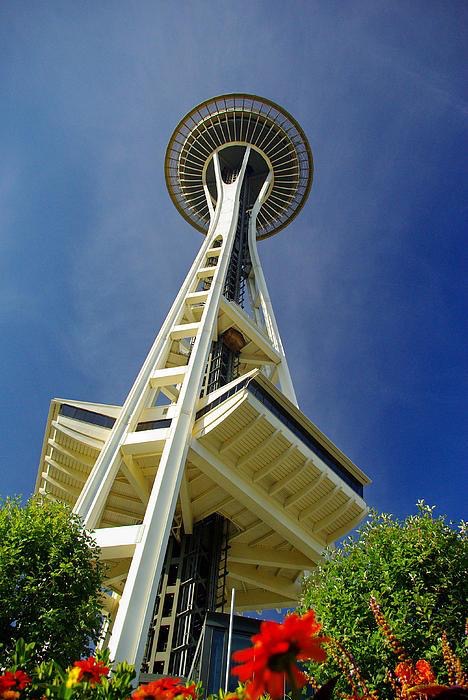 And lastly, while you’re enjoying your meal don’t forget that only the interior rotates, not the external structure. If you set your drink on the window ledge, it’ll slowly drift away from you. More than a few enterprising and frugal drinkers have enjoyed their neighbors fine scotch, or their cocktail; one after the next, helpless to resist as they just kept appearing on the window ledge next to their table.
And lastly, while you’re enjoying your meal don’t forget that only the interior rotates, not the external structure. If you set your drink on the window ledge, it’ll slowly drift away from you. More than a few enterprising and frugal drinkers have enjoyed their neighbors fine scotch, or their cocktail; one after the next, helpless to resist as they just kept appearing on the window ledge next to their table.
Visit this link for a long list of Space Needle fun facts.

